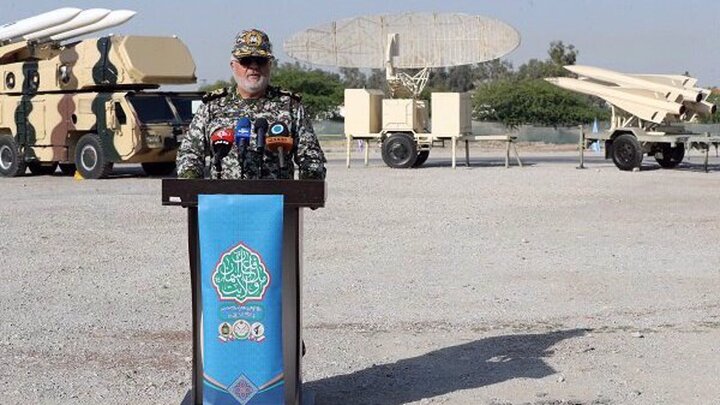Iran (IMNA) - The drill, which began on Thursday, involves the participation of various military branches including the Army's Air Defense Force, the Islamic Revolution Guards Corps' Aerospace Force, the Islamic Republic of Iran's Air Force, the Navy of the Islamic Republic of Iran, the Navy of the IRGC, and selected units from the Army's ground forces under the operational control of the Khatam al-Anbiya Joint Air Defense Base.
Spanning an area of 583 km, the exercises encompass the southern coastal strip and extend 400 km inland, covering air surveillance areas as well.
Defense Forces Execute Realistic Exercise with Rapid Response Approach and Secure Communication Systems
The spokesperson for the defense forces, Brigadier General Abbas Farajpour, announced that a comprehensive exercise was carried out in a realistic environment. The exercise began with the defense systems promptly fulfilling their assigned mission, adhering to the principles of passive defense.
Furthermore, the exercise focused on establishing secure and multi-layered communication channels between the defense systems and the command and control centers of the integrated air defense network. This allowed for timely decision-making in the face of potential threats.
During the initial stage of the drill, which took place in one third of the country's airspace, both manned and unmanned aircraft from the Army and the IRGC conducted intelligence and reconnaissance flights.
Indigenous Air Defense Systems Successfully Deployed in Exercise to Counter Hypothetical Attack
Operational and defensive measures were executed by indigenous detection, interception, and engagement systems during a recent exercise, according to Gen. Farajpour. The exercise showcased the remarkable capabilities of completely indigenous air defense systems.
The exercise's command and control centers utilized state-of-the-art active and passive radar systems, which are entirely indigenous. These advanced systems relied on signal and electro-optical readouts to effectively monitor the exercise area.
Gen. Farajpour explained that upon identifying a hostile target through the observation network, the defense system promptly activated the appropriate countermeasures within the operational circuit.
Iran's Air Defense Units Showcase Locally Produced Systems in Exercise
Gen. Farajpour, spokesperson for Iran's armed forces, revealed that all the detection, identification, interception, and engagement systems utilized by the army and the IRGC in the recent exercise were manufactured by young industrialists within Iran's defense industries. Despite facing severe sanctions and pressures, these industrious individuals have demonstrated remarkable success, firmly believing in the motto "We can."
The primary objective of the exercise, as stated by Gen. Farajpour, is to exhibit the strength, high morale, faith, and martyrdom-seeking spirit of Iran's armed forces. By showcasing their authority and power, the noble nation of Iran can further cultivate a sense of pride in its military capabilities.


Your Comment